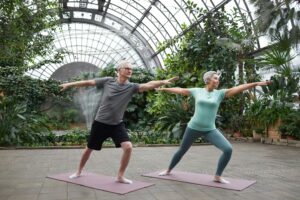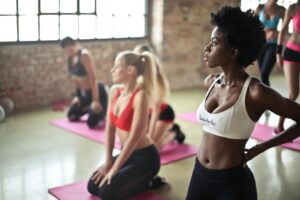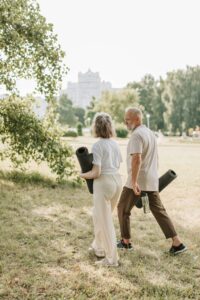Reverse Aging: Exploring the Science and Techniques
Introduction
As we age, remaining dynamic turns out to be progressively significant for keeping up with our wellbeing and imperativeness. Exercise is a powerful tool in slowing down the aging process, offering numerous benefits for both the body and mind. In this blog, we will explore the role of exercise in healthy aging, provide workout routines for different age groups, and share tips to help you stay fit and youthful.
The Science Behind Exercise and Aging
Regular physical activity has a profound impact on the aging process. Here’s how exercise contributes to healthy aging:
- Improves Cardiovascular Health: Exercise strengthens the heart and improves circulation, reducing the risk of cardiovascular diseases.
- Enhances Muscle Mass and Strength: Strength training helps maintain and build muscle mass, which naturally declines with age.
- Increases Bone Density: Weight-bearing exercises strengthen bones and reduce the risk of osteoporosis.
- Boosts Metabolism: Regular physical activity keeps your metabolism active, helping to manage weight and energy levels.
- Promotes Brain Health: Exercise stimulates the production of neurotrophic factors that support brain function and cognitive health.
- Reduces Inflammation: Physical activity lowers chronic inflammation, a key factor in many age-related diseases.
Exercise Routines for Different Age Groups
In Your 20s and 30s: Building a Strong Foundation
- Cardio: Aim for at least 150 minutes of moderate-intensity cardio per week. Activities like running, cycling, and swimming are great options.
- Strength Training: Incorporate strength training exercises at least twice a week, focusing on all major muscle groups. Exercises like squats, lunges, push-ups, and dumbbell rows are effective.
- Flexibility: Include stretching or yoga sessions to maintain flexibility and prevent injury.
Workout Routine:
- Monday: 30-minute run + Full-body strength training
- Wednesday: 45-minute cycling class
- Friday: 30-minute HIIT workout
- Saturday: Yoga session
In Your 40s and 50s: Maintaining Strength and Flexibility
- Cardio: Continue with regular cardio exercises, such as brisk walking, jogging, or dancing. Aim for 150 minutes per week.
- Strength Training: Focus on maintaining muscle mass with strength training exercises. Use moderate weights and perform 2-3 sessions per week.
- Balance and Flexibility: Incorporate balance exercises like tai chi or Pilates, along with regular stretching.
Workout Routine:
- Monday: 30-minute brisk walk + Upper body strength training
- Wednesday: 45-minute dance class
- Friday: 30-minute elliptical session + Lower body strength training
- Sunday: Pilates or tai chi session
In Your 60s and Beyond: Focusing on Mobility and Balance
- Cardio: Engage in low-impact cardio activities like walking, swimming, or cycling on a stationary bike. Aim for at least 150 minutes per week.
- Strength Training: Perform strength training exercises with light weights or resistance bands to maintain muscle mass and bone density. Focus on 2 sessions per week.
- Flexibility and Balance: Include gentle stretching, yoga, or balance exercises daily to enhance mobility and prevent falls.
Workout Routine:
- Monday: 30-minute walk + Gentle strength training with resistance bands
- Wednesday: 30-minute swim session
- Friday: 30-minute stationary bike ride + Balance exercises
- Sunday: Gentle yoga or stretching session
Tips for Staying Motivated
- Set Realistic Goals: Start with achievable goals and gradually increase the intensity and duration of your workouts.
- Find Activities You Enjoy: Choose exercises that you find enjoyable to stay consistent and motivated.
- Exercise with a Friend: Working out with a friend or joining a group class can make exercise more fun and keep you accountable.
- Listen to Your Body: Pay attention to your body’s signals and adjust your routine as needed to avoid injury.
- Stay Consistent: Make exercise a regular part of your routine by scheduling it into your day and sticking to it.
Conclusion
Exercise is a vital component of healthy aging, offering numerous physical and mental benefits. By incorporating regular physical activity into your routine, you can maintain strength, flexibility, and overall health as you age. Whether you’re in your 20s or your 60s, there’s a suitable exercise routine that can help you stay youthful and vibrant. Start today, and embrace the journey to a healthier, longer life.






